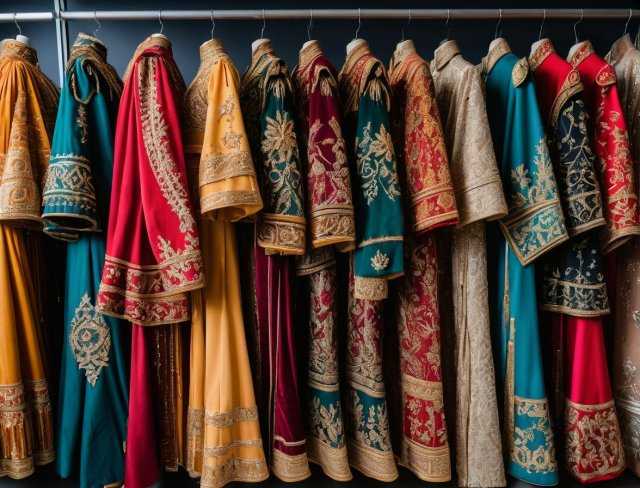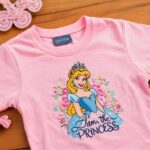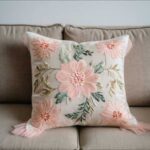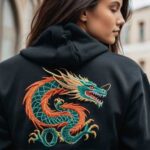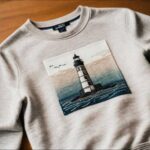A Beginners Journey
Unlocking the Art of Costume Embroidery
Introduction
Embroidery, a timeless art form spanning centuries and cultures, weaves narratives into fabric with each intricate stitch. In costume embroidery, this ancient craft merges tradition and innovation, from historical royal garments to modern couture. This article explores the rich tapestry of techniques, symbolic meanings, and creative applications across global cultures. Whether adorning ceremonial attire with symbolic motifs or designing imaginative fantasy costumes, embroidery serves as a bridge between past and present, celebrating diverse traditions while pushing the boundaries of artistic expression.
Join us on a journey through the artistry of costume embroidery, where threads become storytellers of craftsmanship and cultural heritage. Discover the technical intricacies and creative challenges that shape embroidered masterpieces, as we delve into the profound significance of each stitch and its role in preserving cultural identity and artistic innovation.
Exploring Costume Embroidery Design and Patterns
Design is the cornerstone of costume embroidery, setting the stage for the entire creative process. It begins with the selection of motifs, which can range from intricate floral patterns to bold geometric shapes. Each design element carries its own aesthetic and historical significance. Floral motifs, for instance, are often associated with traditional and romantic themes, drawing inspiration from nature’s elegance. These designs can be found in various cultural embroidery styles, such as the delicate blossoms in Japanese kimonos or the vibrant flowers in Mexican Otomi embroidery.
Geometric patterns, on the other hand, lend a contemporary and structured feel to embroidered costumes. These designs are characterized by their symmetry and precision, often reflecting cultural and historical influences. For example, Islamic art is renowned for its intricate geometric designs, which translate beautifully into embroidered garments. Similarly, Celtic knots and patterns bring a sense of history and mystique to costume embroidery, making them popular choices for themed events and historical reenactments.
Embroiderers can draw inspiration from a multitude of sources. Historical costumes offer a rich tapestry of design ideas, showcasing the evolution of fashion and embroidery techniques over centuries. The opulent gowns of the Renaissance, adorned with gold thread and elaborate patterns, provide a glimpse into the artistry of the past. Similarly, the intricate embroidery found in Victorian garments reflects the era’s attention to detail and craftsmanship.
Art movements also offer a treasure trove of inspiration for costume embroidery. The flowing lines and organic forms of Art Nouveau, for instance, translate beautifully into embroidered motifs. The bold colors and abstract shapes of Art Deco can add a modern and dynamic touch to embroidered costumes. By studying these artistic styles, embroiderers can infuse their work with a sense of historical and cultural context.
Nature is another abundant source of design inspiration. The delicate veins of a leaf, the intricate patterns of a butterfly’s wings, or the swirling currents of a river can all be translated into embroidery designs. By observing and interpreting natural elements, embroiderers can create patterns that resonate with the organic beauty of the natural world.
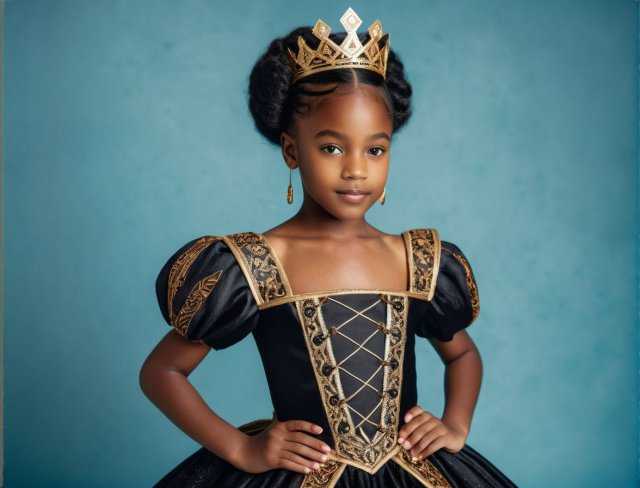
Experimentation is key to discovering unique and innovative patterns. Embroiderers are encouraged to sketch their designs, play with different motifs, and combine elements from various sources. This creative exploration allows for the development of a personal style and the creation of “one of a kind’ embroidered pieces. Modern technology also plays a role in design exploration. Digital embroidery software offers tools for creating and modifying patterns, enabling embroiderers to visualize their designs before stitching them onto fabric.
Furthermore, the integration of cultural symbolism adds depth and meaning to embroidered costumes. Different cultures have unique embroidery styles and motifs that carry specific meanings. For instance, Chinese embroidery often features dragons and phoenixes, symbolizing power and prosperity. In Indian embroidery, paisleys and mandalas are common motifs, representing eternity and the universe. By incorporating these culturally significant patterns, embroiderers can create costumes that tell a story and honor diverse traditions.
Fabrics for Costumes
Choosing the right fabric is crucial in costume embroidery as it not only affects the overall look but also influences the ease of embroidery and the durability of the finished garment. Each fabric offers unique qualities in terms of texture, drape, and suitability for various embroidery techniques. The choice of fabric can significantly impact the intricacy of the design, the types of threads and needles used, and the overall wearability of the costume.
Fabrics like cotton and linen are favored for their smooth texture and ease of stitching, making them ideal for beginners. More luxurious fabrics like silk and velvet, while beautiful, require advanced skill levels due to their delicate nature and the additional care needed to prevent damage during embroidery.
Different fabrics can also enhance the thematic elements of a costume. For historical or theatrical costumes, choosing period appropriate materials like brocade or wool can add authenticity and depth to the design. For fantasy or cosplay costumes, synthetic fabrics such as polyester blends can provide durability and flexibility while allowing for a wide range of colors and finishes.
Understanding the properties of each fabric type helps in selecting the best material for a specific project, ensuring that the final embroidered costume not only looks stunning but also holds up well under use and remains comfortable to wear.
• Cotton: Known for its versatility, cotton is a popular choice for both hand and machine embroidery. It’s easy to work with, holds embroidery stitches well, and is available in a wide range of weights and weaves. Cotton fabrics are suitable for a variety of costume styles, from casual to formal, and they can withstand frequent washing, making them ideal for costumes that require durability.
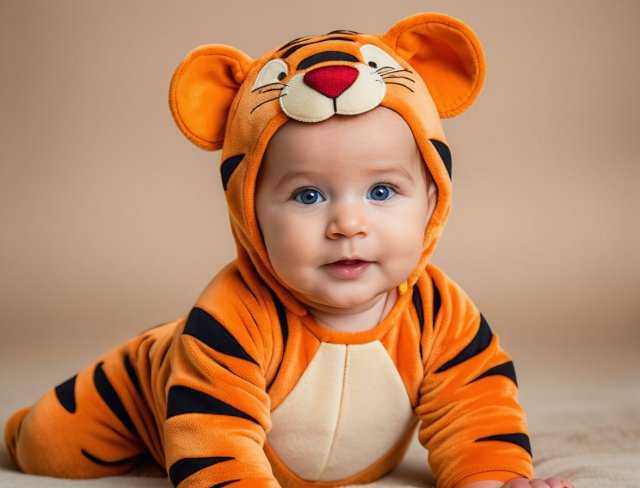
• Silk: Silk is revered for its luxurious feel, natural sheen, and ability to drape beautifully. It is often chosen for high end costumes that require intricate and delicate embroidery. Silk threads glide smoothly through fabric, making it easier to create fine details and complex designs. However, silk can be more challenging to work with due to its delicate nature and higher cost compared to other fabrics.
• Linen: Linen is a durable and breathable fabric with a textured surface that adds a rustic charm to embroidered costumes. It holds embroidery stitches firmly and softens with each wash, making it suitable for historical costumes and garments that require a natural, lived in look. Linen is available in various weights and textures, offering versatility for different embroidery styles.
• Velvet: Velvet is prized for its plush texture and rich appearance, making it a luxurious choice for embroidered costumes. It adds depth and elegance to garments, especially when enhanced with metallic or contrasting thread. Velvet can be challenging to embroider on due to its pile and tendency to shift during stitching. It requires careful handling and may benefit from stabilizers to maintain stability and prevent distortion.
• Synthetic Blends: Fabrics like polyester blends offer durability, affordability, and a wide range of colors and textures. They are easy to care for and often chosen for costumes that require frequent use or specific performance requirements. Polyester blends can mimic the look and feel of natural fibers while providing additional benefits such as wrinkle resistance and color retention.
• Brocade and Jacquard: These woven fabrics feature intricate patterns and textures created through weaving techniques, making them ideal for costumes that require a rich, decorative look. Brocade and jacquard fabrics often incorporate metallic threads or raised motifs, adding depth and visual interest to embroidered designs. They are commonly used in historical costumes and ceremonial attire.
Choosing the right fabric involves considering several factors:
• Embroidery Technique: Different fabrics respond differently to embroidery techniques such as satin stitch, chain stitch, or appliqué. For example, lightweight fabrics like silk may require a stabilizer to prevent puckering, while heavier fabrics like velvet may need extra support to maintain shape and texture.
• Costume Style and Function: Consider the intended use of the costume. Historical costumes may benefit from natural fibers like linen or silk to achieve authenticity, while fantasy or cosplay costumes may prioritize visual impact and performance.
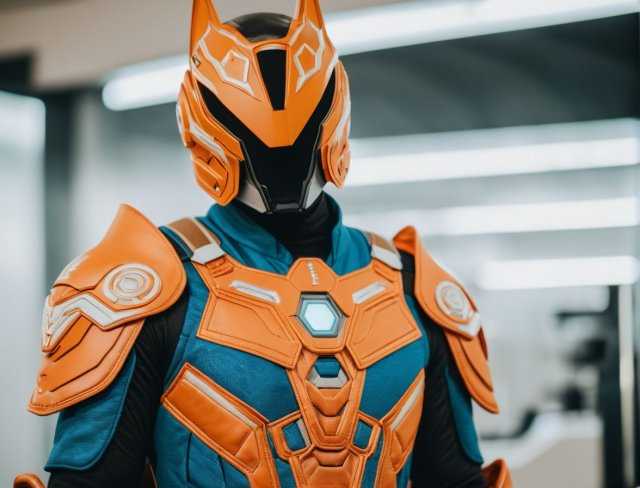
• Durability and Care: Evaluate the fabric’s durability and care requirements. Costumes that will be worn frequently or subjected to rigorous activities may require fabrics that are easy to clean and maintain.
• Personal Preferences: Your personal preferences for texture, color, and aesthetic also play a significant role in fabric selection. Experimenting with different fabrics allows you to explore creative possibilities and tailor your choice to suit the specific requirements of each costume project.
By understanding the unique qualities of each fabric and how they influence the embroidery process, embroiderers can make informed decisions that enhance the quality and aesthetic appeal of their embroidered costumes. For instance, fabrics with a tighter weave such as canvas or twill provide a stable base for intricate embroidery, allowing for finer details and more elaborate designs.
On the other hand, loosely woven fabrics like muslin or chiffon may require backing materials or stabilizers to prevent puckering and distortion during stitching. Consideration of fabric weight and stretch is also crucial, especially for costumes that require movement or draping, ensuring that the embroidery enhances rather than hinders the garment’s functionality and comfort.
Understanding these factors empowers embroiderers to select fabrics that not only complement their design vision but also support the technical requirements of the embroidery process. Whether creating historical replicas, theatrical costumes, or imaginative cosplay outfits, choosing the right fabric sets the foundation for a successful and visually impactful embroidered costume.
Types of Costumes and Events
Costume embroidery encompasses a diverse array of styles and purposes, tailored to specific cultural, historical, and celebratory contexts. From ceremonial robes adorned with intricate patterns symbolizing status and tradition to whimsical fantasy costumes inspired by literature and pop culture, each genre of costume embroidery serves a unique purpose in storytelling and identity expression.
Traditional costumes, such as those worn during festivals or religious ceremonies, often feature motifs that reflect community values, spiritual beliefs, or historical narratives. These costumes not only preserve cultural heritage but also serve as tangible expressions of identity and belonging within their respective communities.
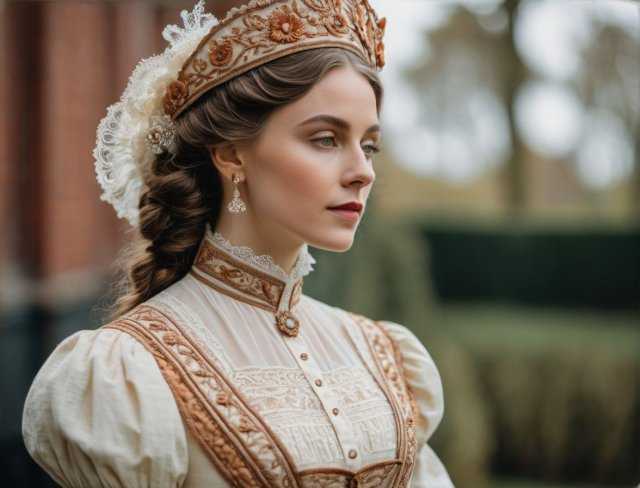
Beyond traditional attire, costume embroidery extends into contemporary contexts such as theater productions, where garments are crafted to evoke specific historical periods or fictional worlds. The meticulous detail in these costumes not only enhances visual authenticity on stage but also enriches character development and narrative depth.
Costume embroidery plays a pivotal role in cosplay, where enthusiasts meticulously recreate characters from movies, comics, and video games. These costumes often blend artistic interpretation with technical precision, showcasing embroiderers’ skills in replicating intricate designs and capturing the essence of beloved characters.
1. Historical Costumes
Historical costumes are a cornerstone of costume embroidery, as they often require intricate detailing to accurately represent a specific era. Reenactors, historical enthusiasts, and performers use these costumes to bring history to life.
• Medieval and Renaissance Fairs: Costumes from these periods often feature rich fabrics such as velvet and brocade, adorned with embroidery depicting heraldic symbols, floral motifs, and intricate patterns that reflect the artistry of the time.
• Colonial and Victorian Eras: Embroidered petticoats, waistcoats, and gowns from these periods often include detailed floral designs, monograms, and lacework, showcasing the opulence and craftsmanship of historical fashion.
• Historical Reenactments: Whether it’s the American Civil War, ancient Rome, or Tudor England, historical reenactments demand authentic costumes with period appropriate embroidery to create an immersive experience.
2. Fantasy and Cosplay Costumes
Fantasy and cosplay costumes offer limitless creative possibilities, allowing embroiderers to bring characters from literature, films, and video games to life.
• Fantasy Literature and Films: Costumes inspired by works like “The Lord of the Rings” or “Harry Potter” often include elaborate embroidery to represent magical symbols, mythical creatures, and enchanted landscapes.
• Anime and Video Games: Characters from anime and video games often have distinctive costumes with intricate embroidery. Cosplayers replicate these designs with precision to achieve screen accurate representations.
• Science Fiction and Futuristic Themes: Sci fi costumes can feature embroidery that mimics circuitry, alien patterns, or futuristic insignia, adding depth and authenticity to the overall design.
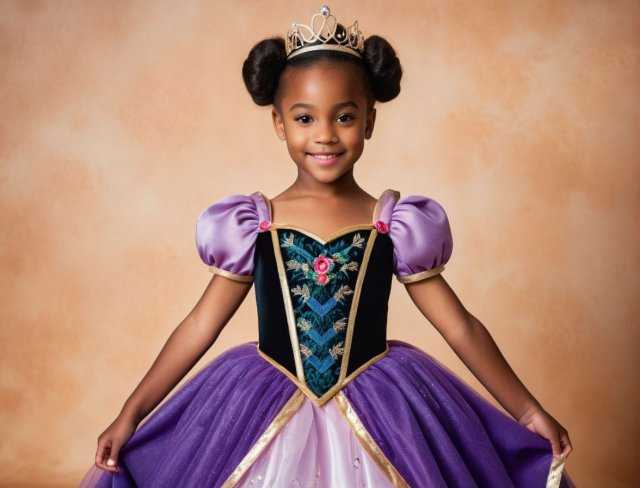
3. Themed Parties and Events
From elegant masquerade balls to whimsical garden parties, themed events provide the perfect opportunity to showcase embroidered costumes that align with the event’s theme.
• Masquerade Balls: These events call for opulent costumes with lavish embroidery, including masks embellished with beads, sequins, and intricate stitching that reflect the mysterious and luxurious nature of the ball.
• Garden Parties: Light, airy costumes with floral embroidery in pastel shades are ideal for garden parties. Embroidery can include motifs such as flowers, butterflies, and vines, enhancing the natural beauty of the surroundings.
• Halloween and Costume Parties: For Halloween, embroidered costumes can range from spooky to whimsical. Gothic motifs, eerie symbols, and thematic colors like black and orange dominate Halloween embroidery.
4. Cultural Celebrations
Embroidery plays a significant role in cultural celebrations, where traditional garments are adorned with motifs that symbolize heritage and identity.
• Wedding Attire: In many cultures, bridal wear features elaborate embroidery. For example, Indian bridal lehengas are adorned with intricate patterns, while Chinese qipaos often include dragon and phoenix motifs representing good fortune.
• Festivals and Holidays: Cultural festivals like Diwali, Chinese New Year, and Hanbok Day often feature traditional attire with symbolic embroidery. These garments celebrate cultural heritage and are worn with pride during festivities.
• Rites of Passage: Embroidered garments for significant life events, such as christenings, coming of age ceremonies, and graduations, often include family crests, religious symbols, or other meaningful motifs.
5. Theater and Stage Costumes
Theater and stage productions rely heavily on embroidered costumes to enhance the visual storytelling and bring characters to life.
• Shakespearean Productions: Costumes for Shakespearean plays often feature elaborate embroidery that reflects the Elizabethan era’s fashion, including ruffs, doublets, and gowns with detailed embellishments.
• Musicals and Dance Performances: From Broadway shows to ballet performances, embroidered costumes add flair and character. Sequins, beads, and glittering threads catch the light, adding to the visual spectacle.
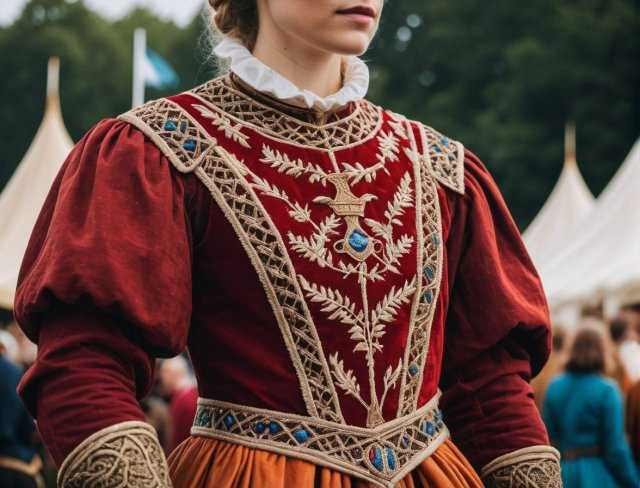
• Opera and Classical Performances: Operatic costumes are known for their grandeur. Embroidery adds to this, with intricate designs that highlight the opulence and drama of the performance.
6. Children’s Costumes
Children’s costumes for parties, school plays, or themed events are often playful and colorful, featuring embroidery that brings beloved characters to life.
• Fairy Tale Characters: Costumes inspired by fairy tales like Cinderella, Snow White, or Peter Pan often include whimsical embroidery, such as stars, flowers, and magical creatures.
• Superheroes and Villains: Embroidery on superhero costumes can mimic armor, emblems, or powers, making the costume more dynamic and engaging for children.
• Animals and Nature: Costumes that depict animals or elements of nature often feature embroidery to represent fur, feathers, scales, or foliage, adding texture and authenticity.
7. Fashion Design and Runway Shows
High fashion and couture often showcase embroidery as a hallmark of luxury and craftsmanship, pushing the boundaries of textile artistry.
• Couture Collections: Designers use embroidery to create statement pieces that highlight their creativity and skill. These garments often feature hand embroidered details, metallic threads, and 3D embellishments.
• Ready to Wear: Even in ready to wear collections, embroidery is used to add unique touches and elevate the garment’s appeal. Embroidered jackets, dresses, and accessories are common in fashion shows.
8. Holiday Costumes and Festive Attire
Embroidery adds festive flair to holiday costumes and attire, making celebrations more vibrant and memorable.
• Christmas Sweaters and Apparel: Embroidered Christmas sweaters with motifs like reindeer, snowflakes, and Santa Claus are festive staples. Similarly, other holiday themed clothing can feature embroidery to match the occasion.
• Easter and Spring Celebrations: Pastel colored fabrics with embroidered flowers, bunnies, and eggs are perfect for Easter celebrations. These motifs symbolize renewal and joy.
• National and Cultural Festivals: Embroidered costumes for national holidays, such as Fourth of July in the USA or Bastille Day in France, often include patriotic symbols and colors, showcasing national pride.
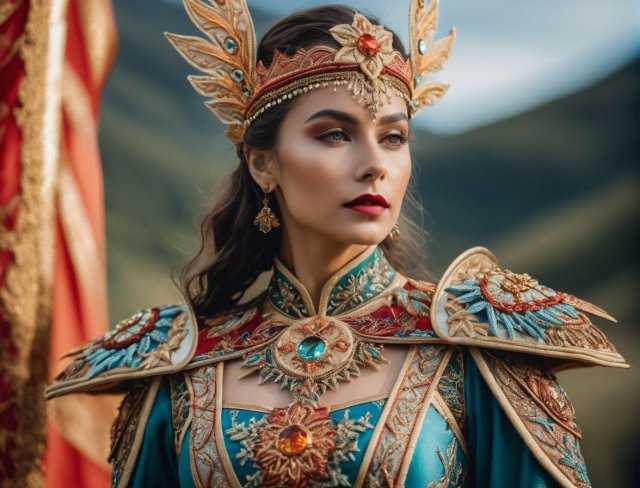
Embroidery enhances costumes for a variety of events and occasions, providing a blend of creativity, cultural significance, and visual appeal. Whether you are a home embroiderer or a professional, understanding the types of costumes and the events they are designed for helps in selecting the right materials, techniques, and designs. From historical reenactments and fantasy conventions to cultural celebrations and theatrical performances, costume embroidery offers endless possibilities to express artistry and storytelling through fabric and thread.
Costume embroidery not only enriches the visual impact of garments but also plays a crucial role in preserving and interpreting cultural traditions. For instance, in historical reenactments, meticulously embroidered period costumes transport audiences to different eras, evoking the attire and ambiance of past civilizations.
Similarly, in cultural celebrations such as traditional festivals or religious ceremonies, embroidered costumes serve as symbols of heritage and communal identity, embodying centuries old customs and beliefs. The craftsmanship and attention to detail in these costumes not only honor the past but also inspire a deeper appreciation for cultural diversity and artistic expression in contemporary contexts.
The Role of Color and Texture
Color and texture are fundamental elements in costume embroidery that significantly impact the visual appeal and overall effectiveness of the design. The selection of colors is crucial as it sets the tone and mood of the costume, creating a visual narrative that complements the theme and character it represents.
Understanding color theory helps embroiderers choose harmonious color palettes that enhance the design. For instance, complementary colors like red and green or blue and orange can create vibrant contrasts, making the embroidery stand out. Analogous colors, such as blue, blue green, and green, provide a more subtle and cohesive look, ideal for designs that require a harmonious and serene feel.
Texture, achieved through the choice of threads and stitching techniques, adds depth and dimension to embroidery, transforming flat designs into tactile, engaging works of art. The use of different thread types, such as metallic, silk, cotton, or wool, can produce varying textures that catch the light differently, creating dynamic effects. Metallic threads add a shimmering quality, making elements like stars, jewelry, or regal details pop. Silk threads, with their smooth and glossy finish, lend a luxurious texture, perfect for delicate and elegant designs. In contrast, wool threads offer a matte and more rustic texture, suitable for historical or folk costumes.
Incorporating various stitch techniques also plays a pivotal role in adding texture. Techniques like satin stitch create a smooth, even surface, ideal for large, filled areas that require a polished look. French knots and seed stitches add a three dimensional aspect, providing a raised texture that enhances details like flower centers, eyes, or accents on garments. Layering stitches and using padding techniques can further amplify the texture, giving the embroidery a sculptural quality.
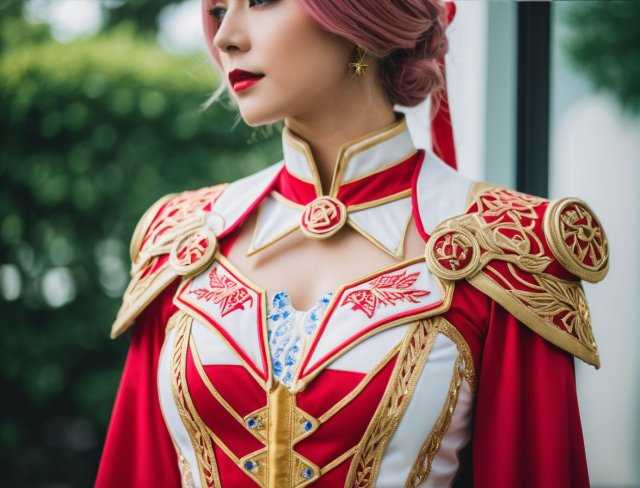
The interplay between color and texture can be strategically used to highlight specific elements of the costume. For example, using a brighter, more saturated color for the focal point of the design draws attention, while more muted tones in the background help create a sense of depth and focus. Similarly, combining smooth and textured areas within a design can create contrast and visual interest, guiding the viewer’s eye across the costume.
Moreover, the cultural significance of colors and textures cannot be overlooked. Different cultures imbue colors with specific meanings and symbolism. Red, often associated with power and passion in Western cultures, signifies good fortune and joy in many Eastern traditions. Understanding these cultural nuances allows embroiderers to infuse their work with deeper meaning and resonance.
Ultimately, mastering the use of color and texture in costume embroidery enables embroiderers to elevate their craft, creating visually stunning and emotionally evocative pieces. Whether aiming for bold and dramatic or subtle and sophisticated, the thoughtful application of these elements ensures that the finished costume is not only beautiful but also rich in artistic and cultural expression.
Cultural Significance and Symbolism
Embroidery holds profound cultural significance across different societies, often serving as a means of preserving traditions, conveying identity, and celebrating heritage. In many cultures, specific embroidery styles, motifs, and colors carry deep symbolism that reflects historical narratives, religious beliefs, social status, and even regional affiliations. For example, in Chinese culture, the dragon and phoenix motifs symbolize power, prosperity, and marital bliss, making them prominent choices for wedding attire and ceremonial garments. These motifs are meticulously embroidered with gold threads on silk fabrics to convey wealth and auspiciousness.
Similarly, Indian embroidery is rich in symbolism, with motifs such as paisleys (known as “buta”) symbolizing fertility and abundance, while lotus flowers represent purity and enlightenment. These motifs adorn traditional garments like sarees and kurta pajamas, connecting wearers to their cultural roots and spiritual beliefs. Each stitch and pattern in Indian embroidery, whether it’s the intricate kantha work of West Bengal or the vibrant mirror work of Gujarat, carries stories of craftsmanship passed down through generations.
In Western cultures, embroidery has historically been associated with social status and craftsmanship. During the Renaissance period, elaborate embroidered garments were worn by nobility to display wealth and sophistication. Embroidery often depicted heraldic symbols, floral motifs, and scenes from mythology, serving as a visual language that conveyed lineage and prestige. Today, embroidery continues to be a hallmark of haute couture and luxury fashion, where designers integrate traditional techniques with modern aesthetics to create bespoke pieces that embody both artistic expression and cultural heritage.
Understanding the cultural significance of embroidery allows artisans to create garments that resonate with authenticity and respect. Whether replicating historical designs or adapting traditional motifs to contemporary fashion, embroiderers play a vital role in preserving and revitalizing cultural practices. Embroidered costumes worn during cultural celebrations, ceremonies, and rites of passage serve as tangible expressions of identity and belonging, fostering a sense of pride and continuity within communities.
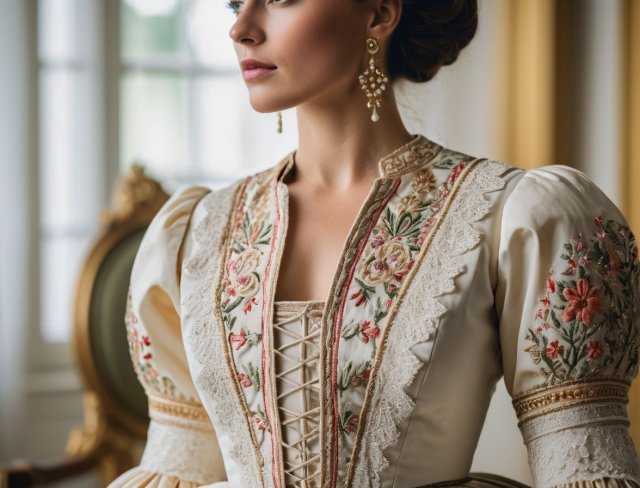
Moreover, embroidery serves as a bridge between past and present, connecting generations through shared stories and craftsmanship. As global awareness and appreciation for diverse cultures grow, embroidery becomes a powerful tool for cultural exchange and dialogue. By studying and incorporating cultural symbolism into their work, embroiderers not only honor tradition but also contribute to a more inclusive and interconnected world, where artistic expression transcends borders and enriches the fabric of society.
In Hispanic culture, embroidery holds deep rooted significance, particularly in traditional costumes that reflect a blend of indigenous, European, and African influences. In countries like Mexico, Guatemala, and Peru, embroidered costumes known as “trajes típicos” or “trajes regionales” play a pivotal role in cultural expression and identity.
These costumes often feature vibrant colors and intricate embroidery patterns that represent local flora, fauna, and historical narratives. For instance, Mexican traditional dresses such as the “traje de Tehuana” from Oaxaca or the “charro” suit from Jalisco are adorned with elaborate embroidery that symbolizes resilience, heritage, and pride.
Each region’s embroidery style and motifs carry specific meanings, connecting wearers to their ancestral traditions and indigenous roots. These costumes are worn during festivals, dances, and religious ceremonies, serving as visual testaments to the rich cultural diversity and resilience of Hispanic communities.
Challenges and Tips for Beginners
Embarking on the journey of costume embroidery can be both exciting and challenging, especially for beginners. Here are some common challenges faced by novice embroiderers along with practical tips to overcome them:
Embroidery requires patience and precision, skills that develop with practice and persistence. Beginners often encounter challenges such as mastering basic stitches like the satin stitch or French knot, which require consistent tension and control. Understanding the anatomy of stitches and practicing on scrap fabric can help build confidence and improve technique over time. Additionally, managing thread tension and preventing puckering on different fabric types are common hurdles.
Using an embroidery hoop to keep fabric taut and experimenting with thread lengths and needle sizes can mitigate these issues, ensuring smoother and more even stitches. As beginners gain experience, they develop a keen eye for detail and a deeper appreciation for the transformative power of embroidery in costume design.
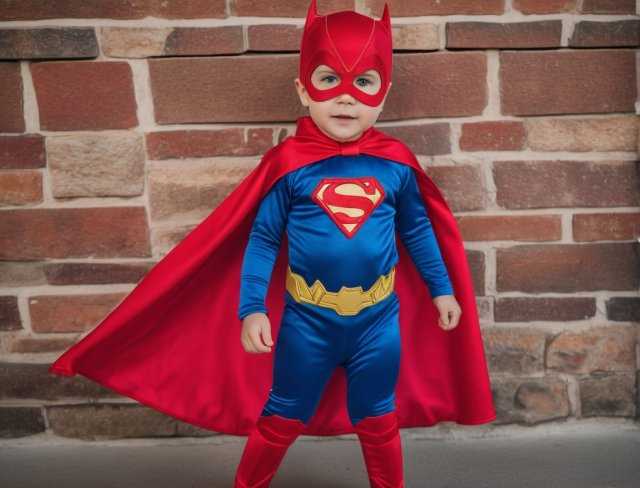
1. Choosing the Right Materials: Selecting suitable materials is crucial for successful embroidery. Beginners may struggle with understanding fabric weights, thread types, and hoop sizes. Start with a medium weight fabric like cotton or linen, which are easier to handle and embroider. Opt for embroidery floss or thread specifically designed for embroidery, as they are smoother and less prone to tangling. Use an appropriately sized embroidery hoop to keep the fabric taut, which facilitates even stitching and prevents puckering.
2. Learning Basic Stitches: Mastering basic embroidery stitches forms the foundation of costume embroidery. Beginners often find it challenging to achieve even stitches and consistent tension. Start with simple stitches like the backstitch, running stitch, and satin stitch. Practice these stitches on a scrap fabric or embroidery sampler to build confidence and improve technique. Online tutorials and embroidery books provide step by step instructions and visual guides to help beginners learn and refine their stitching skills.
3. Managing Thread Tangles: Thread tangling and knotting can frustrate beginners during embroidery. To prevent tangles, use shorter lengths of thread (about 18 24 inches) and thread the needle with a single strand of embroidery floss at a time. Store unused threads neatly wound on bobbins or thread organizers to minimize tangling. When stitching, gently pull the thread through the fabric without pulling too tightly, as excessive tension can lead to knots and uneven stitches.
4. Transferring Designs: Transferring embroidery designs onto fabric can be daunting for beginners. Use transfer methods such as iron on transfers, water soluble stabilizers, or carbon transfer paper to outline designs onto fabric. Alternatively, trace designs directly onto fabric using a washable fabric marker or chalk pencil. Practice transferring designs on scrap fabric to refine the process and ensure accuracy before embroidering onto the final costume piece.
5. Achieving Consistency: Consistency in stitch length, tension, and color distribution is essential for professional looking embroidery. Beginners may struggle with maintaining uniform stitches and color intensity across the entire design. Start with smaller, simpler designs to practice achieving consistent stitching. Pay attention to stitch direction and spacing to ensure even coverage and smooth outlines. Taking breaks during embroidery sessions can help prevent fatigue and maintain focus, leading to better stitching consistency.
6. Exploring Design Creativity: Developing a personal design style and creativity can be challenging for beginners. Experiment with different embroidery techniques, color combinations, and embellishments to discover your unique artistic voice. Draw inspiration from nature, art, literature, and cultural motifs to create original designs that reflect your interests and personality. Join online embroidery communities or workshops to learn from experienced embroiderers and gain inspiration from their work.
7. Patience and Persistence: Above all, patience and persistence are key virtues for beginners in costume embroidery. Embroidery is a skill that improves with practice and dedication over time. Celebrate small victories and learn from mistakes to refine your technique. Allow yourself room for experimentation and growth, embracing the learning process as you develop proficiency in embroidery. Remember that each stitch contributes to the beauty and craftsmanship of your embroidered costumes.
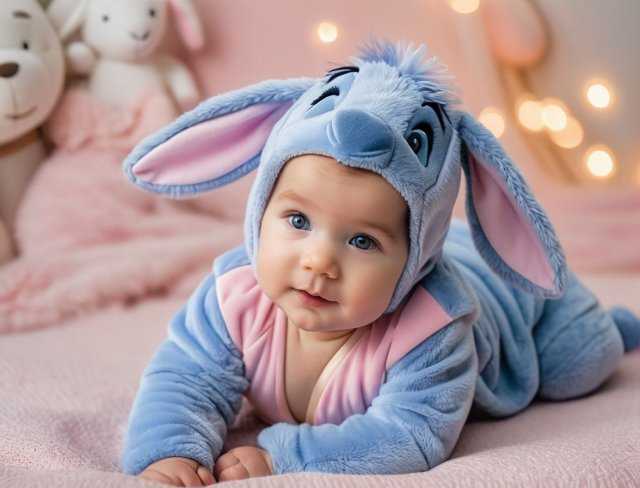
By addressing these common challenges and applying practical tips, beginners can navigate the intricacies of costume embroidery with confidence and creativity. As skills progress, embroiderers will gain mastery in creating intricate, personalized costumes that captivate and delight. Developing a repertoire of advanced techniques, such as thread painting or goldwork embroidery, allows embroiderers to elevate their craftsmanship and explore new artistic possibilities. Moreover, as beginners build their knowledge of color theory and design principles, they can experiment with combining different embroidery stitches and motifs to create unique, visually striking costumes.
As embroiderers continue to refine their skills, they also cultivate a deeper understanding of the historical and cultural contexts that inspire costume embroidery. Studying traditional costumes from around the world provides insights into diverse embroidery traditions and techniques, enriching the creative process.
Embracing embroidery as both an art form and a means of storytelling empowers beginners to imbue their costumes with personal narratives and thematic depth. Ultimately, mastering costume embroidery offers not only technical proficiency but also a pathway to self expression and artistic fulfillment, where each embroidered garment becomes a testament to craftsmanship and creative vision.
Conclusion
Embroidery is more than just a decorative art form; it is a profound narrative of human creativity and cultural heritage. Throughout this exploration of costume embroidery, from the intricate techniques of haute couture to the symbolic motifs in traditional garments worldwide, we’ve uncovered its role in preserving traditions and shaping identities. Each stitch tells a story, whether it adorns a theatrical costume or embellishes a bespoke gown, blending craftsmanship with artistic expression.
For beginners and seasoned embroiderers alike, mastering embroidery involves navigating challenges with patience and embracing the nuances of color, texture, and symbolism. From the mastery of basic stitches to the exploration of diverse cultural meanings, embroidery offers a journey where artistry meets storytelling. It connects generations, fosters creativity, and celebrates the rich tapestry of global cultures. As we continue to explore its endless possibilities, embroidery remains a timeless testament to craftsmanship, creativity, and the enduring allure of handmade artistry.
Now that you have read through this article, feel free to SHOP for products we have created. If you are looking for something special which isn’t in our store, feel free to contact us.

